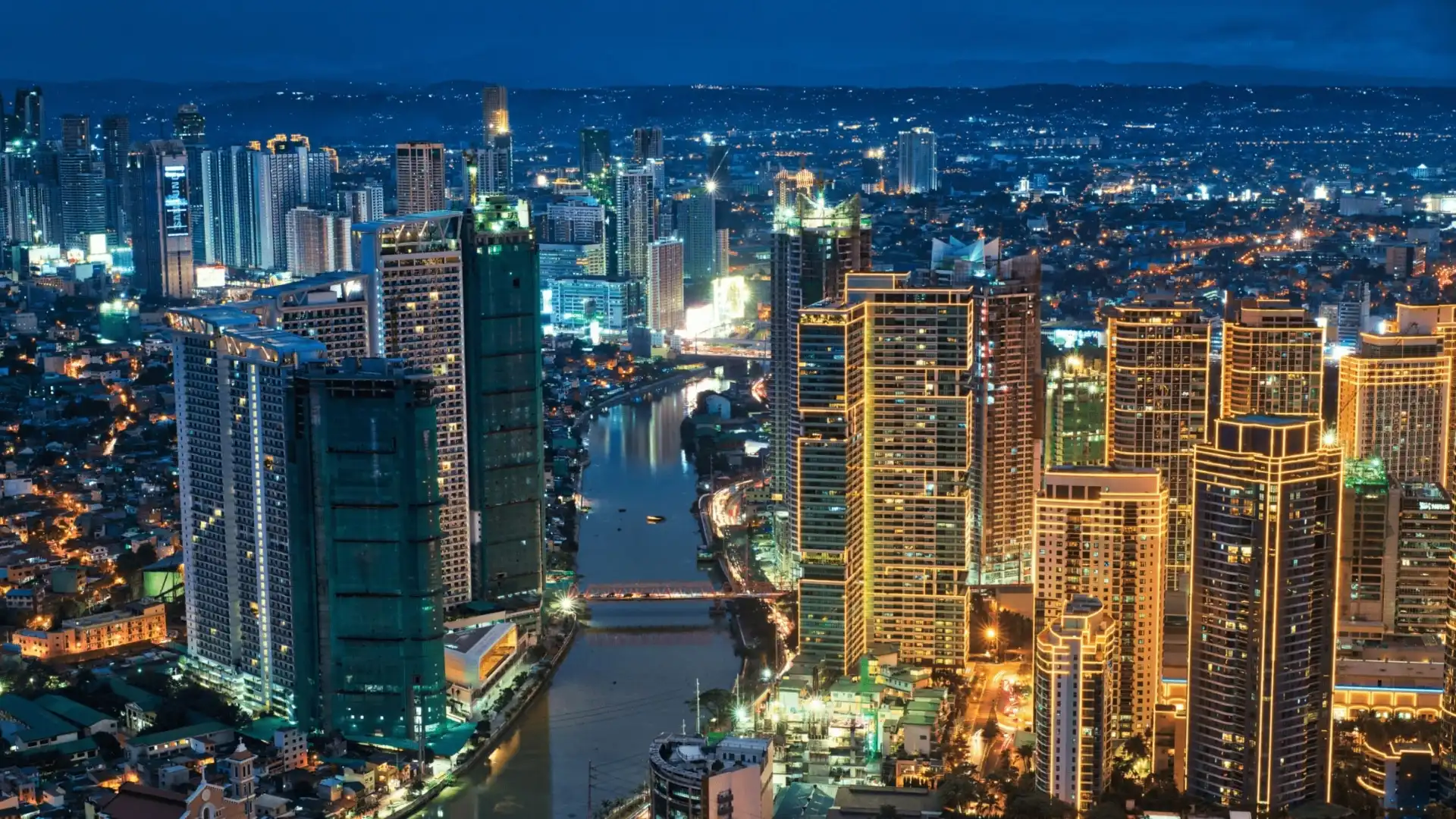Free Newsletter
Get the hottest Fintech Philippines News once a month in your Inbox
The Philippines stands at the brink of a groundbreaking financial transformation, where technology and innovation hold the key to rewriting the country’s economic story. Yet, beneath this promising horizon lies a sobering reality: 44% of the bankable population—those aged 15 and older—remains unbanked or underbanked
Such disconnect stifles not only economic growth but also personal empowerment, leaving millions without access to essentials like credit, investment opportunities, or even basic banking services
Barriers such as geographic isolation, digital illiteracy, and high transaction costs magnify this financial divide. However, amid these gloomy skies, a ray of sunshine filled with rainbows still awaits, as these challenges also present a critical opportunity for fintech to rise to the occasion and dismantle these long-standing obstacles
The Philippines’ fintech sector is bursting with potential. It is a landscape shaped by cutting-edge technologies, progressive regulations, and a rapidly shifting consumer mindset.
Each of these elements converges to create a fertile ground for reimagining financial access and inclusion.
As one of Southeast Asia’s most vibrant and dynamic economies, the nation stands uniquely poised to leverage fintech innovations—not just to redefine financial services but to empower communities that have long been left behind.
The question now is not just about the scale of transformation but its depth and inclusivity. So let’s have a dive into what I believe will be the trends shaping the fintech industry in the Philippines for 2025.
Digital Banks Open Doors to Financial Inclusion
Plans by the Bangko Sentral ng Pilipinas (BSP) to issue up to four new digital bank licenses in 2025 signal a renewed commitment to enhancing financial inclusion. Currently, six digital banks operate in the Philippines, collectively serving 8.7 million depositors.
They manage roughly about USD $150 million in deposits as of mid-2024.
These banks have made significant strides, but concerns linger regarding market homogeneity. Many digital banks function as subsidiaries of traditional institutions, potentially limiting their ability to introduce radical innovations.
Companies like Maya Bank and GoTyme have also been making significant strides. Maya Bank’s seamless integration of banking and payment services and GoTyme’s easy account setup demonstrate how digital-first approaches are redefining convenience and accessibility. To truly transform the sector, new entrants must prioritise diversity and innovation.

To truly transform the sector, new entrants must prioritise diversity and innovation. Specialised digital banks focusing on underserved niches, such as micro, small, and medium enterprises (MSMEs) or rural communities, could address specific gaps.
Non-bank fintech players like GCash, with its proven track record in mobile lending, are well-positioned to disrupt the market further.
New digital banks must deliver unique products and services that transcend traditional banking processes. As the BSP emphasises quality over quantity in licensing, a more diverse and dynamic digital banking ecosystem may soon emerge.
Digital Lending Transforming Accessibility and Financial Inclusion
Digital lending is on the rise in the Philippines, poised for substantial growth in the next three to five years. This surge is driven by increasing demand for online financial services, supportive regulations, and advancements in mobile and internet infrastructure.
According to AND Global Pte. Ltd., the adoption of digital loans has accelerated due to the country’s young, tech-savvy population and the expanding use of smartphones.

Firms like Tonikand Salmon are leading the way in making digital loans more accessible. Their end-to-end online platforms offer convenience, speed, and personalised options for borrowers. Additionally, CIMB Bank leverages its digital infrastructure to reach a broader audience, enhancing financial inclusion across the nation.
The government’s commitment to financial inclusion through reforms like open banking is enhancing competition and improving product offerings. However, challenges remain, including cybersecurity risks and limited rural infrastructure.
Developing robust safeguards and promoting digital literacy will be critical for the sustainability and inclusivity of digital lending in the Philippines. With these efforts, digital loans can become a transformative tool for narrowing the financial inclusion gap and empowering underserved communities.
Tokenised Assets The Future of Filipino Finance
UnionBank has been instrumental in driving tokenised assets forward, setting benchmarks for efficiency and security in digital financial tools. This achievement is often highlighted alongside similar initiatives by RCBC, illustrating the collective push within the industry to advance blockchain-backed solutions.
RCBC, with its blockchain-backed initiatives, is another key player, exploring tokenised financial solutions to further enhance inclusivity and innovation in the Philippine financial ecosystem. RCBC, with its blockchain-backed initiatives, is also leading efforts to explore tokenised financial solutions.
Marking a significant milestone in the adoption of tokenised assets, the launch of PHPX—the first bank-collateralised Philippine Peso stablecoin—represents an exciting development.
Developed by JUST Finance in collaboration with major financial institutions, PHPX provides a secure, blockchain-backed digital representation of the peso.

This innovative tool enhances remittance efficiency and reduces foreign exchange costs, benefiting overseas Filipino workers who collectively sent home USD $40 billion in 2024.
PHPX also facilitates access to tokenised investments, such as bonds and ETFs, enabling Filipinos to diversify their portfolios with greater security and efficiency.
As the Bangko Sentral ng Pilipinas (BSP) prepares to greenlight PHPX’s launch on the Hedera network, this stablecoin is set to revolutionise cross-border payments.
It establishes a foundation for multi-currency stablecoin exchanges. Blockchain technology continues to bridge financial gaps and foster a culture of savings and investment.
BNPL The New Face of Consumer Credit
The Buy Now, Pay Later (BNPL) model is gaining traction among Filipinos, especially younger generations. TransUnion’s Consumer Pulse Survey indicates that nearly two-thirds (63%) of Filipinos aware of BNPL used this service in 2024. Adoption among Gen Z rose from 57% to 65% within a year.
Fintech companies such as Atome are reshaping how Filipinos approach credit. By offering accessible and flexible payment options, these platforms empower users to make purchases without the burden of traditional credit constraints, driving the adoption of the BNPL model.

Offering simplicity and flexibility, BNPL enables purchases with minimal upfront costs. This payment model is increasingly seen as an alternative to traditional credit. Only 35% of Filipinos feel they have sufficient access to credit, making innovative financial solutions essential.
The expansion of BNPL brings challenges, such as the need for robust underwriting systems to manage credit risk effectively. Financial institutions must balance leveraging this opportunity with implementing measures to mitigate delinquencies.
Wealthtech AI and the Rise of Accessible Financial Planning
The last and final development that I believe will shake the 2025 fintech trends up in the Philippines will revolve around Wealthtech.
Wealthtech solutions empower Filipinos to manage their finances more effectively. By blending digital platforms with personalised advisory services, Wealthtech bridges the gap between traditional wealth management and modern financial needs.
Southeast Asia’s openness to innovation positions the Philippines as a fertile ground for Wealthtech advancements. Emerging technologies like generative AI and automation enhance financial planning by offering tailored investment strategies and holistic solutions.
Mynt’s GInvest platform stands out as an accessible and user-friendly option for investing. These efforts align with Southeast Asia’s openness to innovation, positioning the Philippines as fertile ground for Wealthtech advancements.

Additionally, integrating tokenised assets and cryptocurrency within Wealthtech platforms diversifies investment opportunities further.
Hybrid service models, combining human expertise with digital tools, are gaining traction by enhancing customer experiences. They ensure accessibility and affordability for a broader audience. As financial literacy improves, Wealthtech applications are poised to drive long-term wealth creation and economic stability.
Fintech for Every Filipino
The 2025 converging fintech trends in the Philippines like digital lending, tokenised assets, BNPL models, Wealthtech innovations, and digital banks offer more than technological evolution. They represent a fundamental reshaping of financial possibilities.
Yet as fintech propels forward, a critical question emerges: Are we progressing fast enough to include everyone, or are some being left behind?
The real test lies beyond impressive figures and groundbreaking technologies. Success will hinge on fintech’s ability to penetrate society’s deepest corners, tackling financial exclusion where it runs rampant. Will these innovations genuinely uplift underserved communities, or could they inadvertently deepen existing inequalities?
This juncture calls for reflection and bold action. A collaborative approach—uniting regulators, innovators, and communities—is essential to ensure progress fosters inclusion rather than exacerbating divides. Fintech must aim to democratise access, extending its benefits far beyond the privileged few.
The Philippines stands poised to set a powerful example for Southeast Asia and beyond.
But true leadership demands empathy alongside innovation and collaboration over competition. The challenge isn’t just reshaping the financial ecosystem—it’s doing so in a way that uplifts and empowers every Filipino.
Featured image credit: Edited from Freepik








